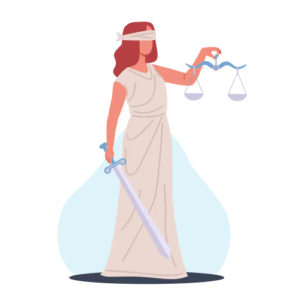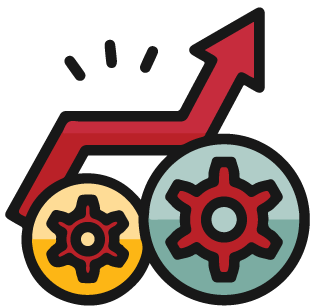Providing culturally responsive care to gender-diverse communities is essential to ensuring equitable, inclusive, and affirming healthcare experiences for transgender, non-binary, and LGBTQ+ individuals. As these communities often face systemic healthcare disparities and stigmatization, healthcare providers must adopt culturally competent practices to address barriers and promote dignity, trust, and quality care. This article explores best practices and strategies for improving healthcare outcomes for gender-diverse individuals.
Let’s talk about gender identity
Often used interchangeably in casual conversation, sex and gender are distinct from one another. A person’s sex is assigned at birth based on physical and physiological features such as anatomy, genetics, and hormones. In contrast, how we perceive gender is based on how we internalize longstanding, socially constructed roles that have historically been limited to a binary of man/woman or boy/girl. However, there are notable exceptions, such as the Two Spirit people of the Zuni and Crow Nations, the Nguii, a third gender recognized by the Zapotecs, the Bakla in pre-colonial Philippines, or the Hijra in South Asia.
Gender identity is how we view ourselves internally and through our individual experiences with gender. A person’s gender identity may be the same or different from their birth-assigned sex, may not be confined to a binary (man/woman or boy/girl), and could shift over time. There’s a lot of diversity in how individuals and groups understand, experience, and express gender. It can be based on the roles they choose, the expectations placed on them, how they relate to others, and the complex ways that gender is regulated by society.
Introduction
The transgender and gender-diverse community faces systemic discrimination, violence, and exclusion rooted in deeply entrenched societal biases. These individuals often endure rejection from families, bullying in schools, and marginalization in workplaces, which pushes them to the fringes of society. The lack of legal recognition of their gender identity exacerbates their vulnerabilities, affecting access to healthcare, housing, education, and social security. Many face abusive medical practices like forced sterilization, psychiatric evaluations, and surgeries to meet discriminatory legal requirements for gender recognition. This legal vacuum perpetuates stigma and fosters an environment of violence, including hate crimes and targeted killings.
Despite progress, such as the depathologization of trans identities through the 2019 revision of the International Classification of Diseases (ICD-11), significant gaps remain. Governments must adopt inclusive policies, eliminate harmful medical practices, and provide accessible gender recognition processes based on self-determination. Sensitization campaigns, education reforms, and anti-discrimination laws are critical to fostering social inclusion and combating prejudice. Protecting the rights and dignity of trans and gender-diverse persons requires sustained efforts to dismantle systemic inequalities and promote a culture of acceptance and respect.
The Legal Framework
- Recognition as the Third Gender
The landmark judgment in NALSA v. Union of India (2014) was a pivotal moment for transgender rights in India. The Supreme Court recognized transgender persons as the “third gender” and affirmed their right to self-identify their gender. It directed the government to treat them as socially and educationally backward classes, making them eligible for reservations in education and public employment. This judgment was a milestone in extending constitutional protections to transgender persons. - Constitutional Safeguards
- Article 14: Guarantees equality before the law and equal protection of the laws. This provision applies to all “persons,” including transgender individuals, ensuring they are not discriminated against.
- Article 15: Prohibits discrimination on grounds of religion, race, caste, sex, or place of birth. The inclusion of “sex” has been interpreted to encompass gender identity.
- Article 19: Ensures the right to freedom of speech and expression, which includes the right to express one’s gender identity.
- Article 21: Protects the right to life and personal liberty, including the right to live with dignity, privacy, and autonomy over one’s body.
- The Transgender Persons (Protection of Rights) Act, 2019
This Act aims to protect the rights of transgender persons and promote their welfare. Key provisions include:- Prohibition of discrimination in education, employment, healthcare, and public spaces.
- The right to self-perceived gender identity, though changing one’s gender on official documents (e.g., to male or female) requires medical certification, a provision criticized for undermining the principle of self-identification.
- Obligations on establishments to create non-discriminatory workplaces and appoint complaint officers to address grievances.
- Decriminalization of Homosexuality
In Navtej Singh Johar v. Union of India (2018), the Supreme Court decriminalized consensual homosexual relationships by reading down Section 377 of the Indian Penal Code. This judgment reaffirmed the fundamental rights of LGBTQ+ individuals, including transgender persons, to live with dignity and equality. - Right to Privacy and Bodily Integrity
The Supreme Court in Puttaswamy v. Union of India (2017) affirmed the right to privacy as a fundamental right under Article 21, emphasizing bodily autonomy. This judgment strengthens the argument that gender identity is a matter of personal choice and must not be subject to external validation or medical interventions. - Anti-Discrimination Measures in Specific Areas
- Education: Institutions are directed to ensure equal access and create inclusive environments for transgender students, as recognized in Mx. Alia SK v. State of West Bengal (2019).
- Workplace Protections: The Sexual Harassment of Women at Workplace (Prevention, Prohibition, and Redressal) Act, 2013, includes transgender women under its scope, providing mechanisms to address workplace harassment.
Challenges and Solutions
- Social Exclusion and Stigma
Transgender persons face rejection from families, communities, and institutions. Cultural biases often equate their identities with dishonor, leading to ostracization and limited access to basic resources. - Barriers to Healthcare
Many transgender individuals face discrimination in accessing healthcare services. Gender affirmation surgeries and hormone therapies remain costly and inaccessible to a significant portion of the community, particularly those from economically disadvantaged backgrounds. - Economic Marginalization
- Unemployment rates are disproportionately high among transgender persons due to workplace discrimination.
- Limited vocational training opportunities further restrict their participation in the formal economy, forcing many into begging or sex work.
- Flaws in Legal Implementation
- The Transgender Persons (Protection of Rights) Act, 2019 relies heavily on medical certification for gender changes in official documents, undermining the Supreme Court’s emphasis on self-determination.
- Bureaucratic hurdles and lack of awareness among officials hinder access to identity cards, welfare schemes, and legal remedies.
Government Initiatives and Recommendations
Welfare Schemes
- Shelter homes (Garima Grehs): These provide housing, vocational training, and other forms of support to homeless transgender persons.
- Social security programs: Some state governments provide pensions and healthcare schemes tailored to the transgender community.
Reservations and Affirmative Action
- The inclusion of transgender persons under “Other Backward Classes” (OBC) by several states ensures access to reserved seats in educational institutions and public employment.
National Council for Transgender Persons
This statutory body, established under the 2019 Act, advises the government on policy matters and oversees the implementation of transgender welfare programs.
Judicial Oversight
Courts have continued to uphold the rights of transgender persons, addressing issues such as wrongful dismissal due to gender identity (G. Nagalakshmi v. State of T.N.) and ensuring their inclusion in public life.
Conclusion
Creating inclusive healthcare environments for gender-diverse communities requires a commitment to cultural competence, sensitivity, and continuous learning. By addressing barriers, providing equitable care, and fostering trust, healthcare providers can ensure that all individuals, regardless of their gender identity, receive respectful and affirming services. Bridging the gap in healthcare disparities is not only a professional obligation but also a step toward a more equitable society.
Glossary of Terms
Cis or Cisgender: of, relating to, or being a person whose gender identity corresponds with the sex the person had or was identified as having at birth.
Gender diversity: A gender expression that is different from cultural norms for that gender.
Gender dysphoria: Distress or extreme discomfort due to identifying as a different gender than one’s gender assigned at birth. Only some gender-nonconforming people experience gender dysphoria at some point in their life.
Gender expression: A person’s outward appearance or behavior as it relates to the gender others perceive them as being.
Gender identity: A person’s internal feeling of being masculine/feminine, man/woman or boy/girl, neither, or an alternative gender or variation on existing gender expression.
Gender nonconforming: An adjective describing somebody whose gender identity or expression does not conform with their assigned sex at birth.
LGBTQIA+: Lesbian, gay, bisexual, transgender, queer/questioning, intersex, and asexual/aromantic/agender. (Tip: A does not stand for Ally.)
Transgender: People whose gender identity differs from their assigned sex. They may or may not use medical assistance to transition to a different sex.
Related Posts-
1.Understanding Writ Petitions: A Comprehensive Guide with Case Laws and Jurisprudence
2. Why Landmark Judgments of the Supreme Court Are Crucial for Indian Society
3. Judicial Independece- a pillar of judiciary
Frequency Asked Questions
Culturally responsive care involves understanding, respecting, and meeting the unique needs of gender-diverse individuals. It focuses on recognizing their experiences, addressing healthcare disparities, and creating inclusive environments free from bias or discrimination.
Cultural competence helps healthcare providers understand gender diversity, build trust, and address systemic barriers faced by transgender and non-binary individuals. It ensures that care is respectful, affirming, and equitable for all patients.
1.Use inclusive language, including patients’ chosen names and pronouns.
2.Ensure gender-neutral facilities like restrooms.
3.Offer training programs for staff on LGBTQ+ cultural competency.
4.Address implicit biases and promote a welcoming clinical environment.
Providers can address disparities by offering affordable care, expanding access to gender-affirming treatments, and advocating for policies that eliminate systemic discrimination in healthcare settings.

 Podcast
Podcast








 Features
Features






